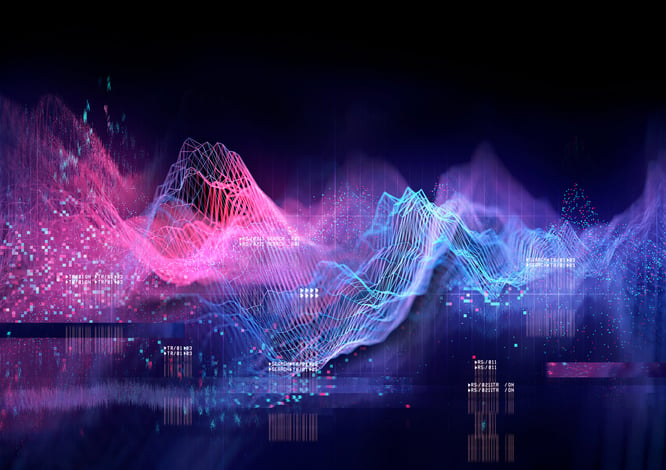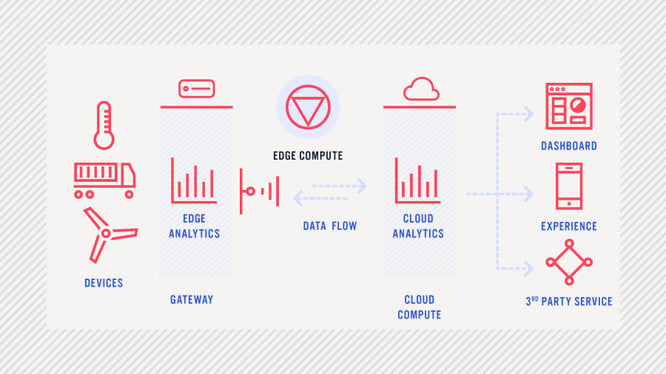Edge computing is in, but that doesn’t mean cloud computing is out.
Recent articles suggest the edge will replace the cloud, or that cloud computing will soon become obsolete; but IoT activates the use of both environments. In fact, in a well-developed hybrid IoT strategy, the two work together to provide increased speed, security and reliability.
Enterprises use the IoT to gain data transparency and respond to real-time information. Edge computing enables devices in the field or in internal environments to respond immediately, with or without connectivity while the cloud stores and processes data from devices for analysis. Intelligent business processes like predictive maintenance and machine learning are built on a foundation of data from the hybrid IoT.

As you begin to consider which technologies best serve your enterprise’s digital transformation, it’s important to know that there is no requirement to choose between edge and cloud. In fact, with the Losant Enterprise IoT Platform, the two can work seamlessly together for maximum efficiency. Using both, businesses can reduce latency, control devices locally, continue operations during intermittent connectivity and merge IT and OT.
Here’s how this combination works and why you should care.
Collect Data. Deploy Intelligence. Move Faster.
Reacting to real-time information drives process improvement and customer satisfaction. Edge computing can enable it.
The number of connected things is rising steadily into billions. Devices, sensors, and gateways compete to deliver information from the field to the cloud and back again as close to real-time as possible. In order for this to work with increased traffic some of this will need to happen at the edge.
Edge computing devices process data at or near the site of collection by becoming small data centers which can make decisions quickly. The best example of edge computing at work is a self-driving car. Because there is no time to send data to the cloud and directions back to the car, it processes data and makes decisions instantaneously. Additionally, by gathering data from the car’s experiences and sending it to the cloud, the data can be analyzed and additional rules can be added to the car’s capabilities.
Can you respond instantaneously to data insights from your machinery? And if so, what else are you doing with the data?

Process at the Edge, Analyze in the Cloud
Big data is the key for process improvement, defining customer needs and refining products. A hybrid IoT model offers the benefits of speed and security from edge and big data analysis from cloud.
One of Losant’s mining industry clients uses edge computing to pull in condition information from its customer’s pumps in remote locations around Australia. Instead of deploying a technician for scheduled preventative maintenance, the client can see the state of its equipment from dashboards in its centralized facility, and get alerts when something requires attention. Additionally, the conditional data that is being collected can create a set of historical information which can be applied to predictive maintenance and machine learning models.
Has your organization begun to create a path for predictive maintenance or drawing insights from machinery?

Reap the Reward of New Benefits
Cloud computing provides flexibility, capacity and capabilities for business by expediting updates, enabling collaboration, and remote access. The addition of edge computing builds on the cloud’s capability to operate or conduct business functions from anywhere.
Enterprises can use edge computing to draw data from connected and non-connected sources. The Losant IoT platform connects data from legacy machinery, new equipment and other existing systems. While some hardware HMIs increase efficiency, Losant uses edge and cloud to create a unified experience and provide a central point of visibility and control across a variety of disparate equipment.
The right technology partners will be able to enable and automate reports or actions in response to the data from one to millions of devices and data sources. One of the benefits of using both edge and cloud computing is the opportunity to combine OT and IT. In industrial environments, information can be made available to more business units for informed business decisions based on real-time information.
What could your business do with transparent data and immediate insights? Share your vision with one of our Solution Engineers today and learn what it takes to get started.
